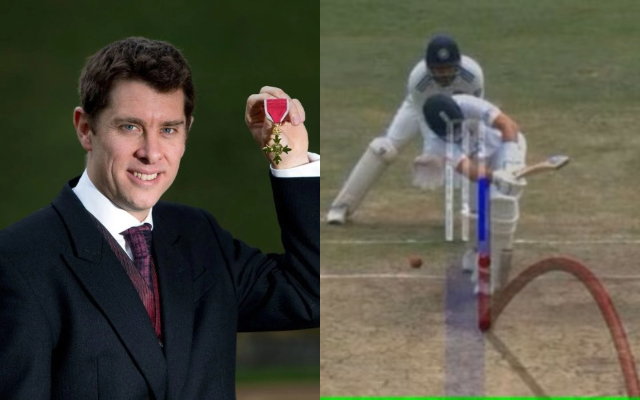Hawk-Eye founder Paul Hawkins defends DRS decision for Joe Root's dismissal in Ranchi Test
In the recent India vs England Test match in Ranchi, a controversial LBW decision that dismissed Joe Root in England's second innings sparked a heated debate over the ball-tracking technology.
3 Min Read


A disputed LBW decision involving Joe Root in the recent India vs. England Test match in Ranchi sparked a fervent discussion on the accuracy and reliability of the ball-tracking technology.
The LBW decision against Root, altered after the on-field umpire's call was overturned, has reignited deliberations concerning the efficacy of the Decision Review System (DRS) in cricket matches. However, Hawk-Eye founder Paul Hawkins has defended the technology used for the ball-tracking system in the Decision Review System (DRS).
"So firstly, you measure the width of the stumps on each day of the Test. That then becomes the lines between what's pitched in line and what's not. It was a very close-on (Joe Root call)," Hawkins told Simon Hughes in the 'The Analyst' podcast.
Also read: BCCI to release Rajat Patidar from India squad to play Ranji Trophy if KL Rahul gets fit
'It would have been clearer on TV' - Paul Hawkins
The incident occurred during England's second innings when Indian spinner Ravichandran Ashwin appeared to have trapped Root LBW. Initially given not-out by the on-field umpire, Kumar Dharmasena, India successfully reviewed the decision. The ball-tracking system indicated that the ball had marginally pitched inside the line of the stumps, leading to Root's dismissal for a score of just 11.
He emphasized the narrow margin of error and proposed improvements in presenting tracking data to aid viewers' comprehension.
"It would have been clearer on TV if the track hadn't come off the ball, so you can see more clearly over the line, which happens automatically if the ball has pitched outside the leg stump," the founder said.
Hawkins also explained the key difference between how Hawk-Eye is used in tennis versus its usage in cricket.
"In tennis, you will occasionally get zero mm in or zero mm out (in terms of ball pitching outside the line). But in tennis, it's decided that it's not out until it's not zero mm, but it's 1mm out. So in tennis, we shift the bounce mark just for the presentation perspective, so a zero mm in becomes a 1mm in to enable the viewers to see the mark," he added.
On the Root call, Hawkins "It must be 1mm more in than out (Joe Root case) because otherwise, we wouldn't have said it's pitched in line. But it is a very close one. As per the laws, we gave the right answer. But we failed in the ability to not be the story and perhaps there's a learning opportunity to improve our presentation and stuff to make those close ones slightly clearer," he concluded.
Also read: Joe Root, Yashasvi Jaiswal make headway in latest ICC Men's Test Batter's Rankings
However, many including former England captain Michael Vaughan and fast-bowler Steve Harmison doubted whether the ball was pitched in line. The wicket became a huge talking point as England collapsed in the second innings. The English media dissected the footage in detail, while Hawkins reiterated that the technology delivered the correct decision as per the prescribed rules.
Download Our App